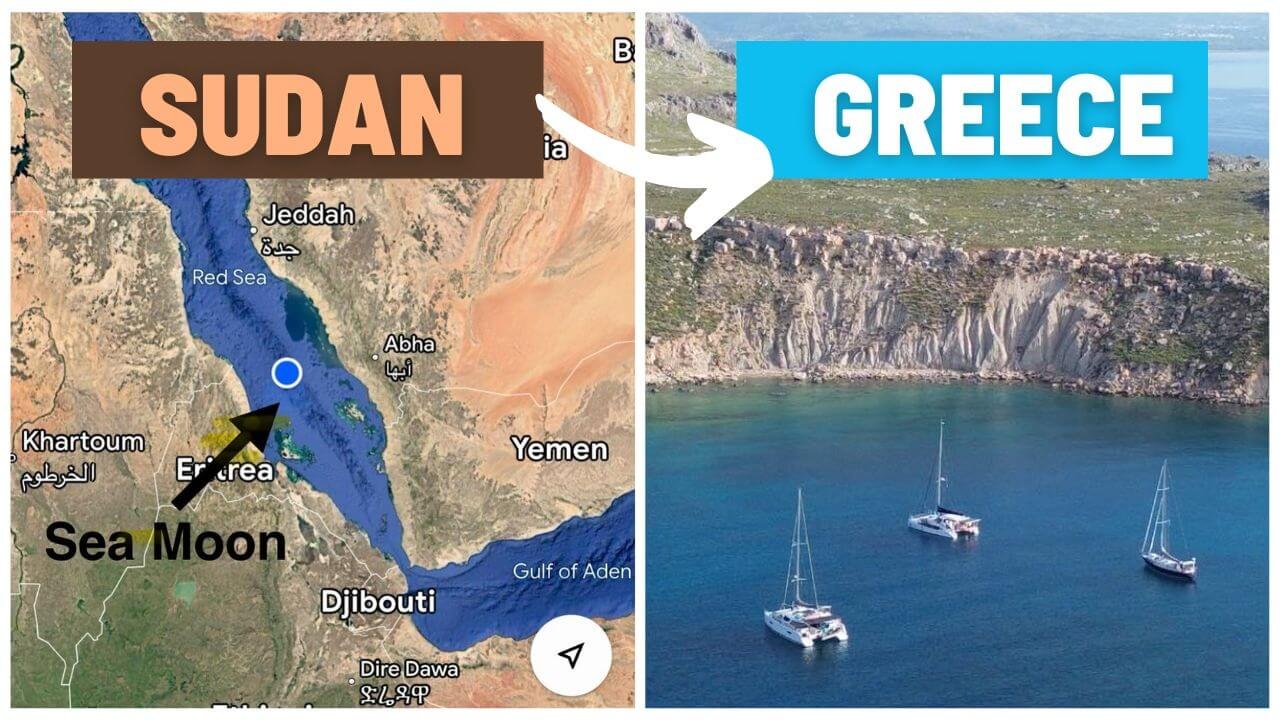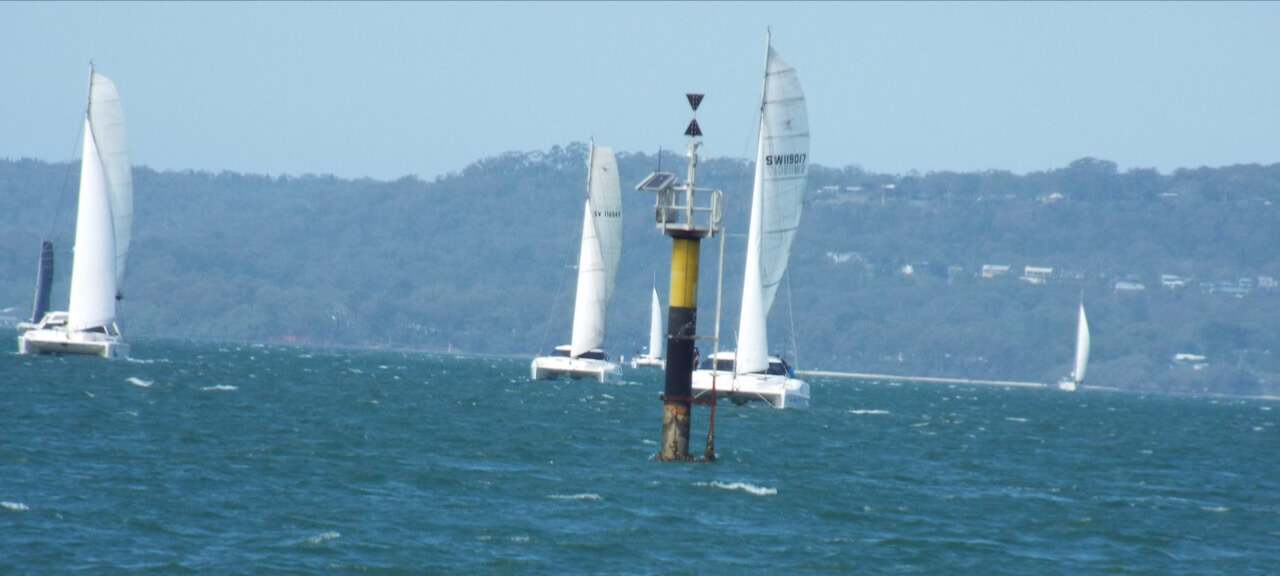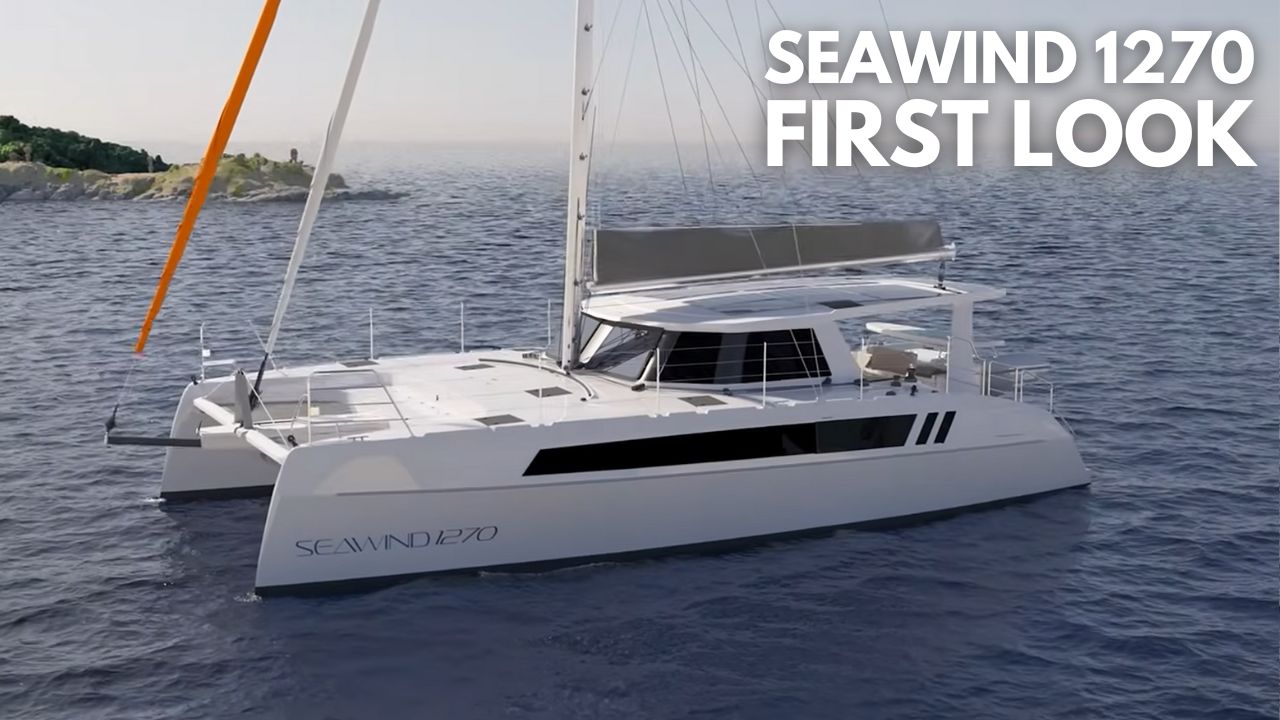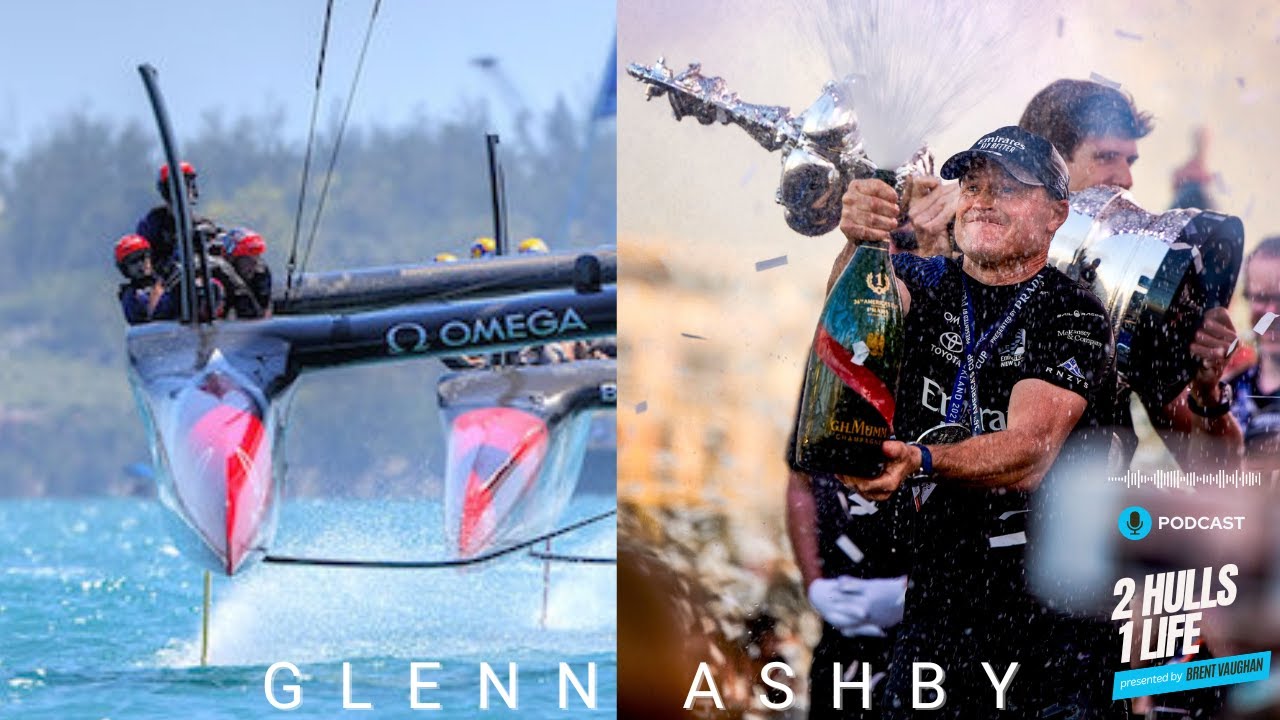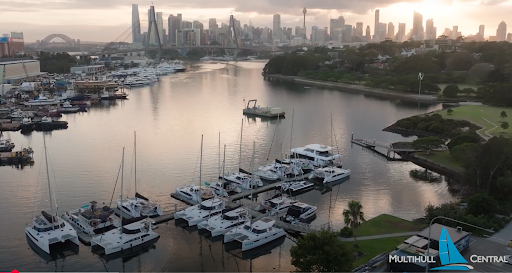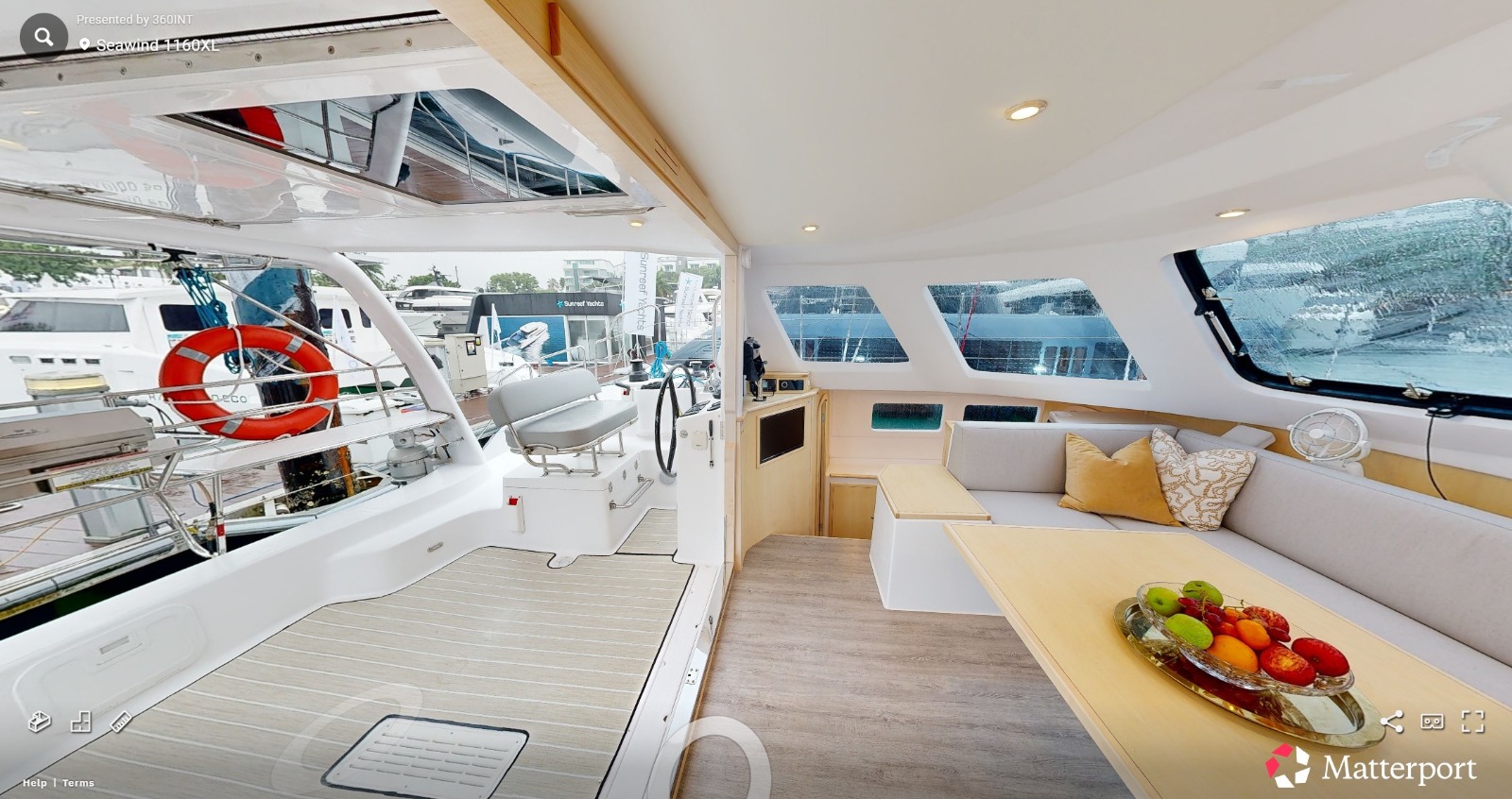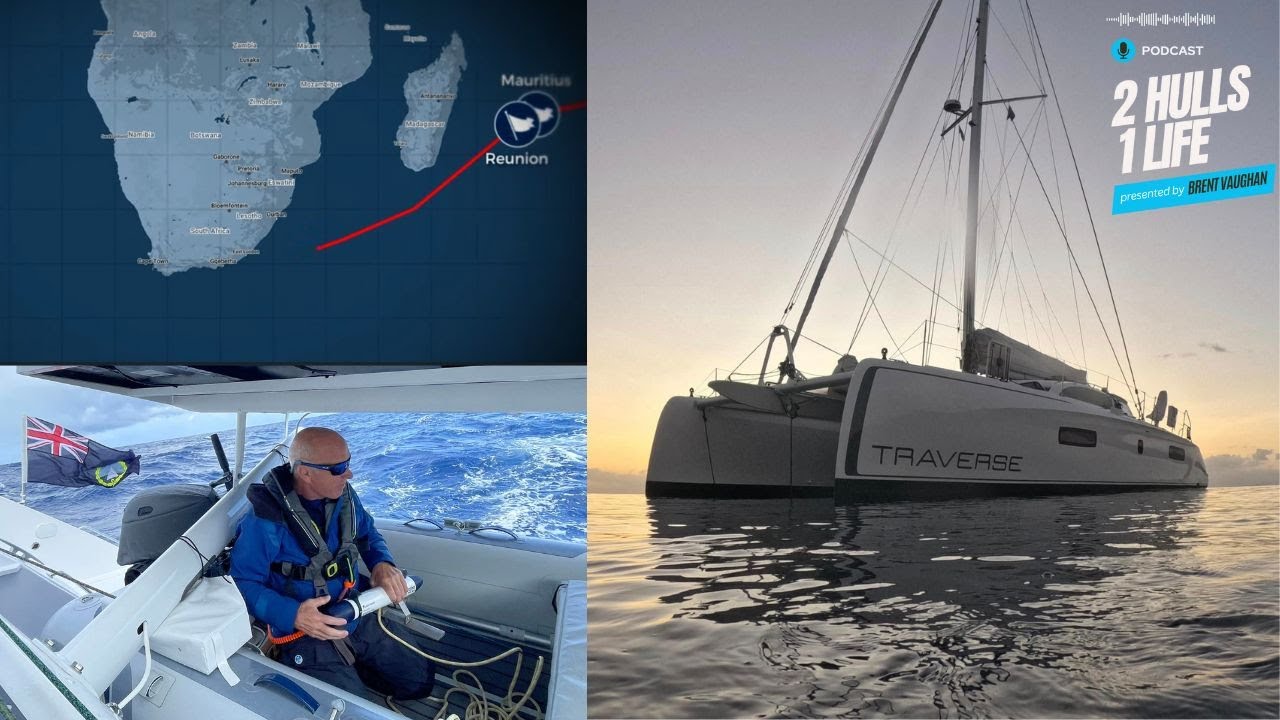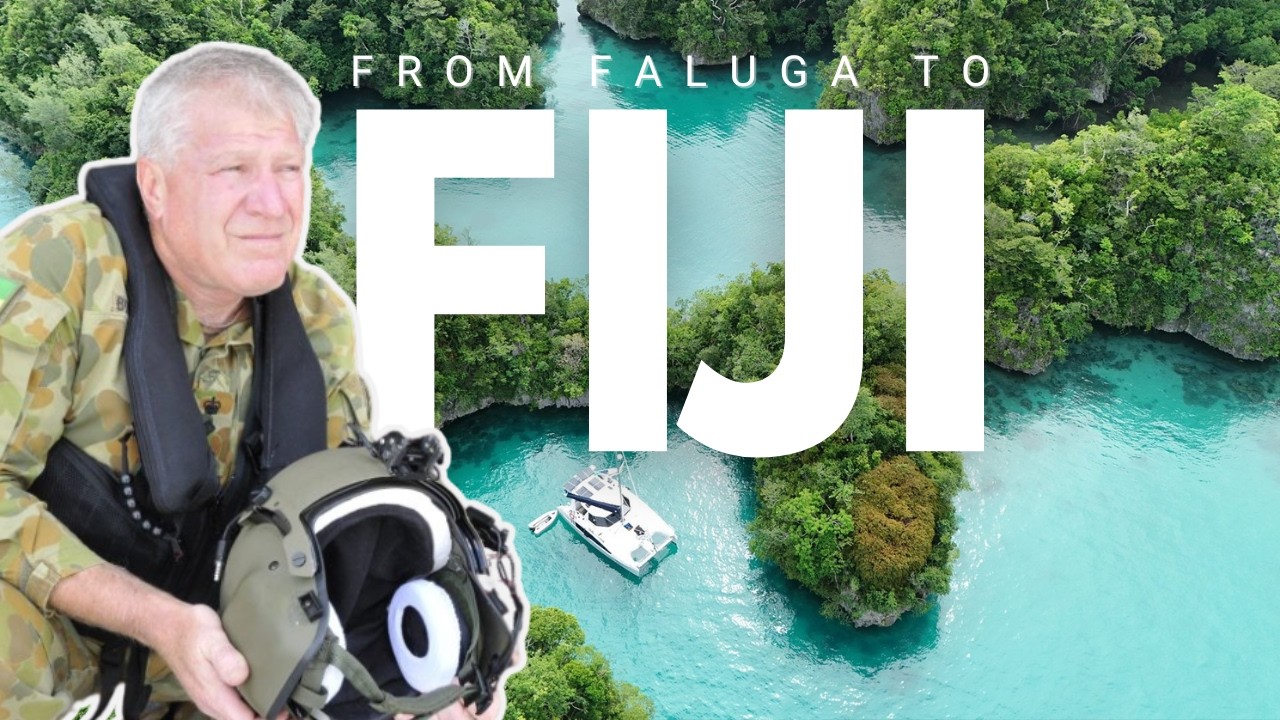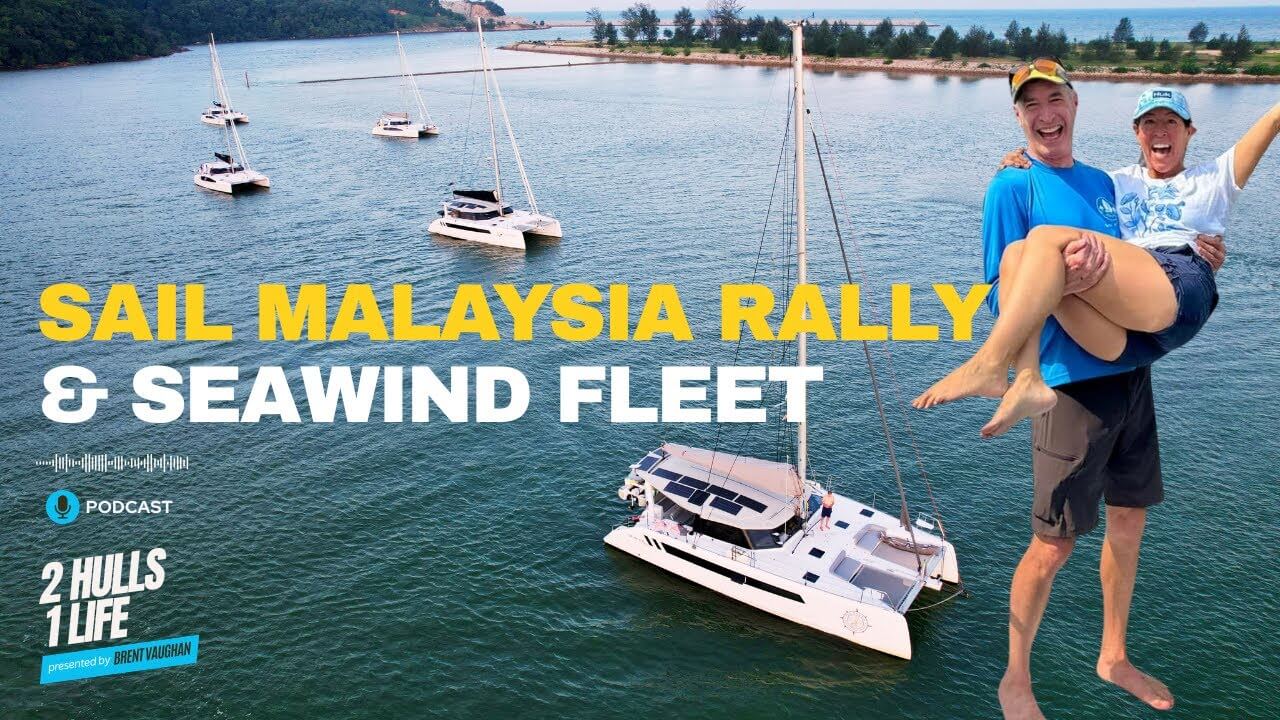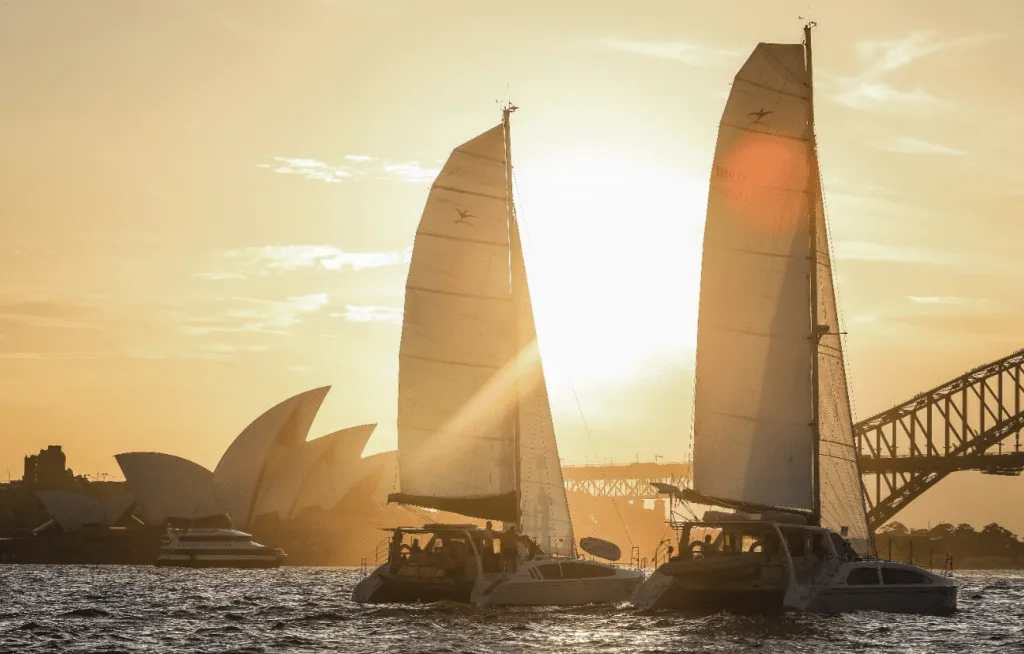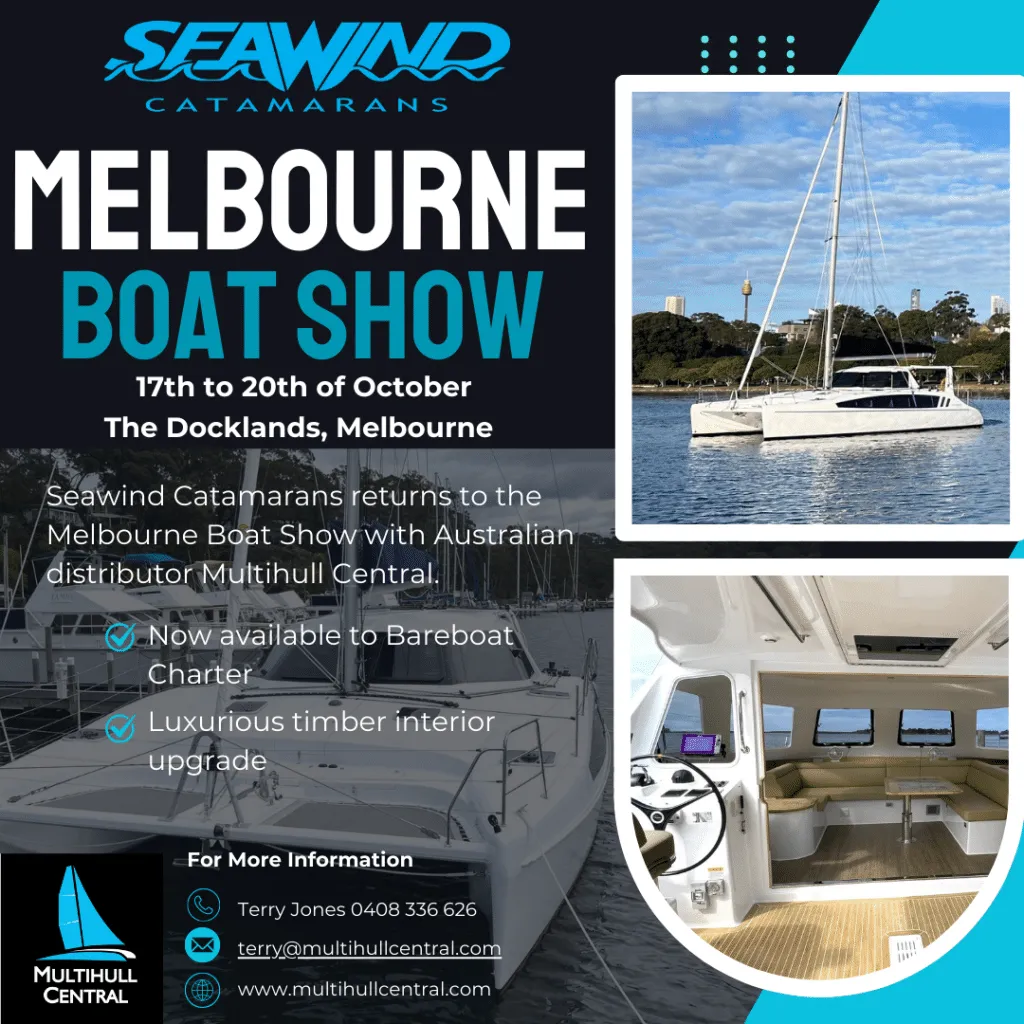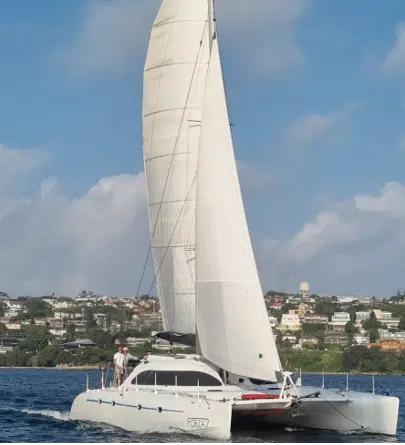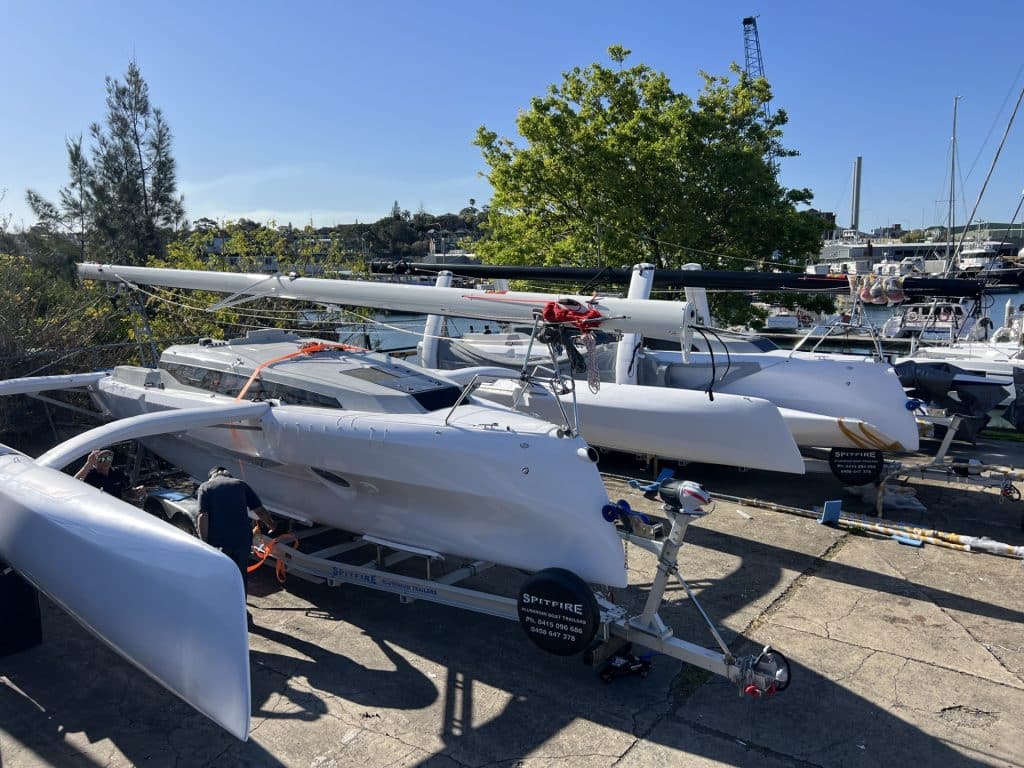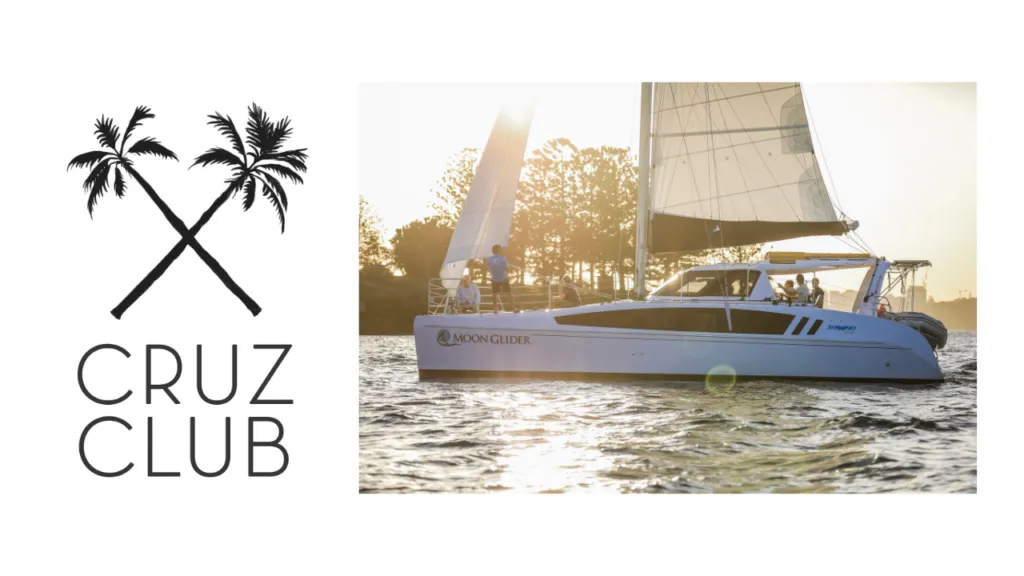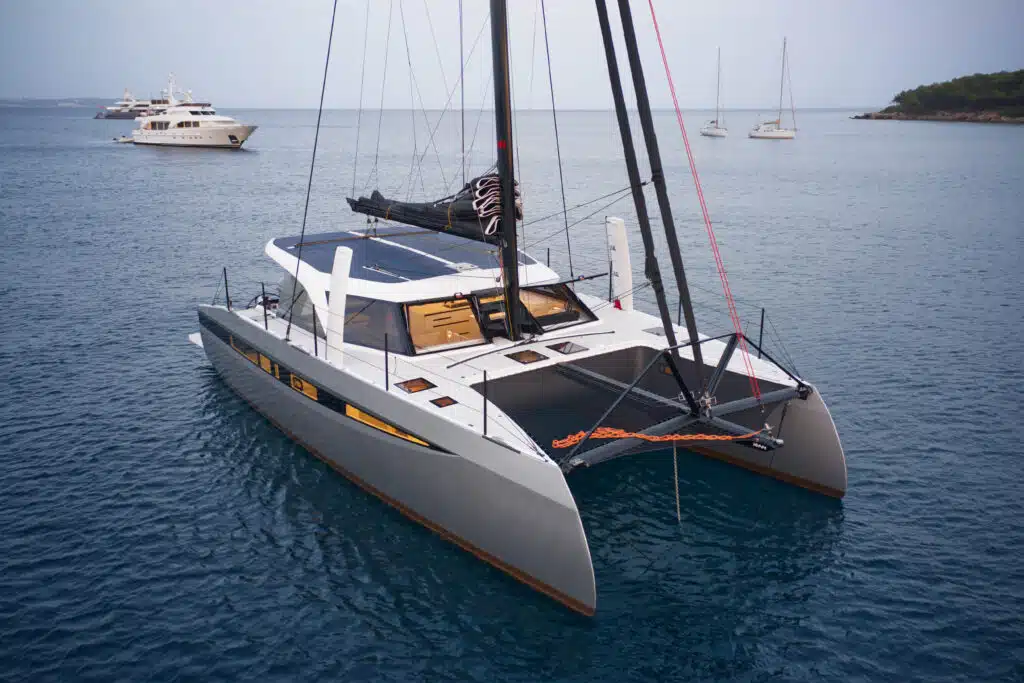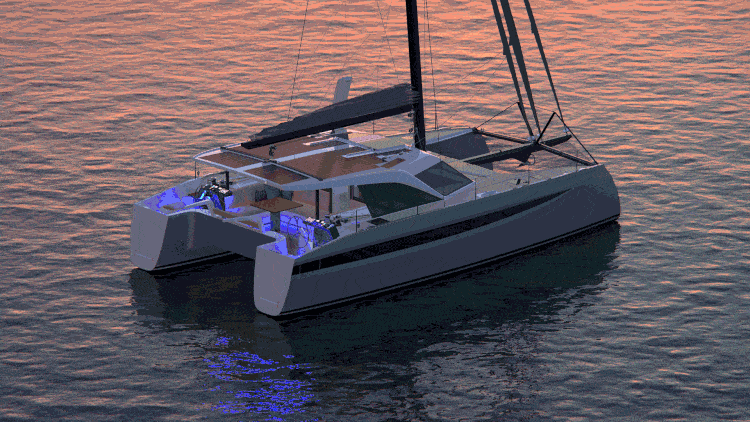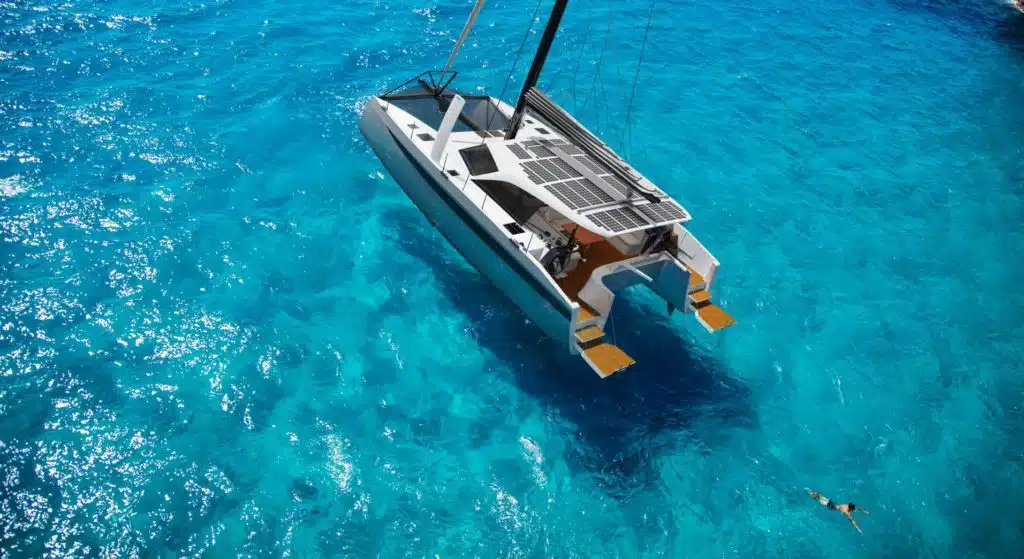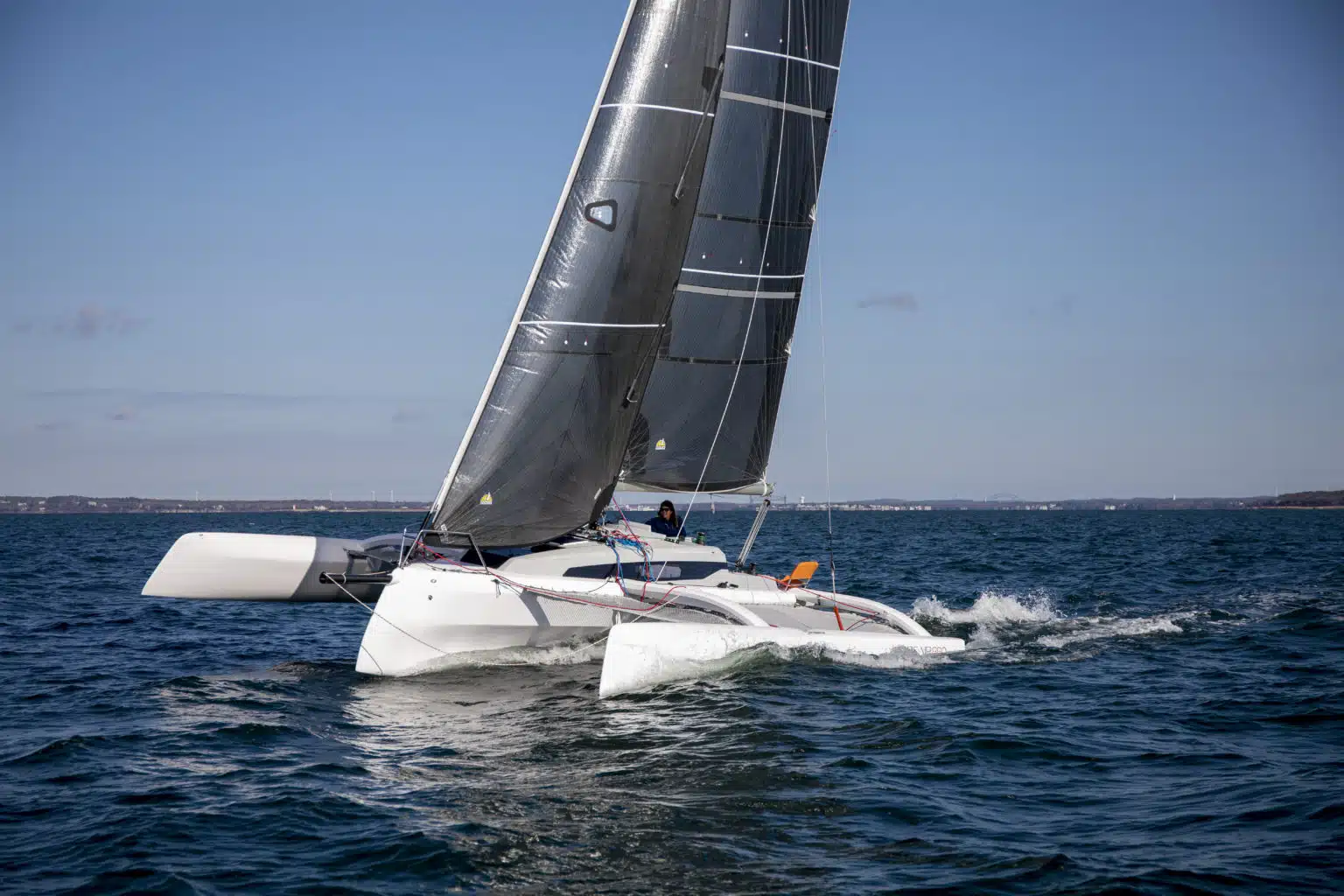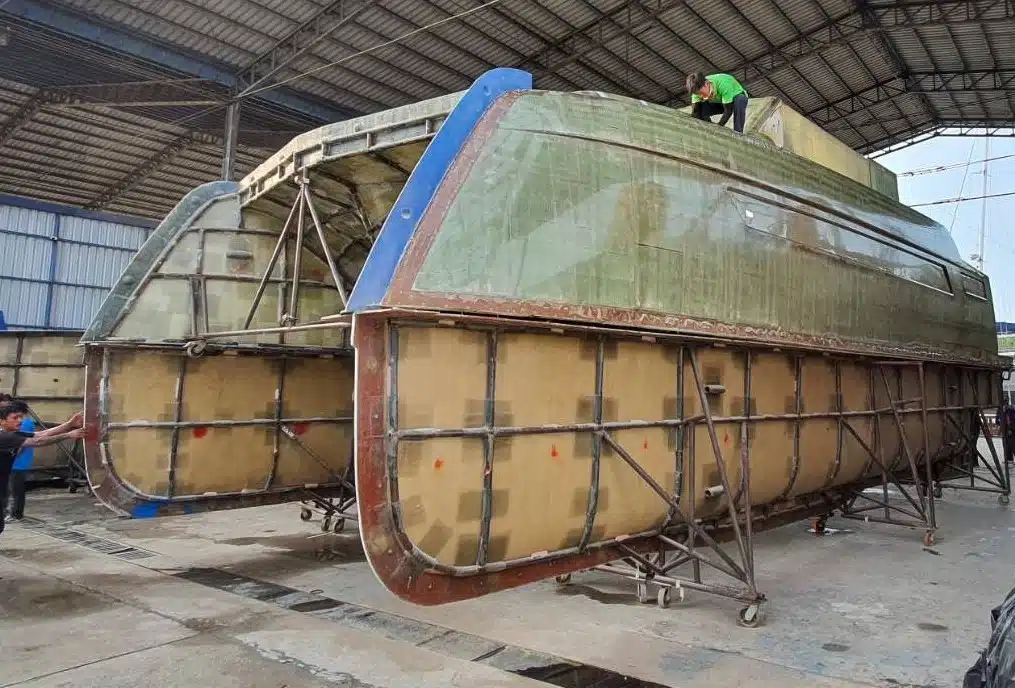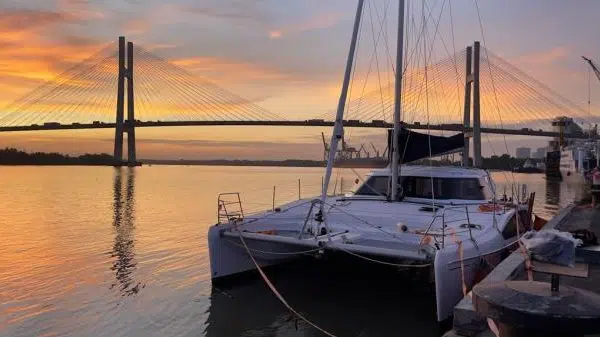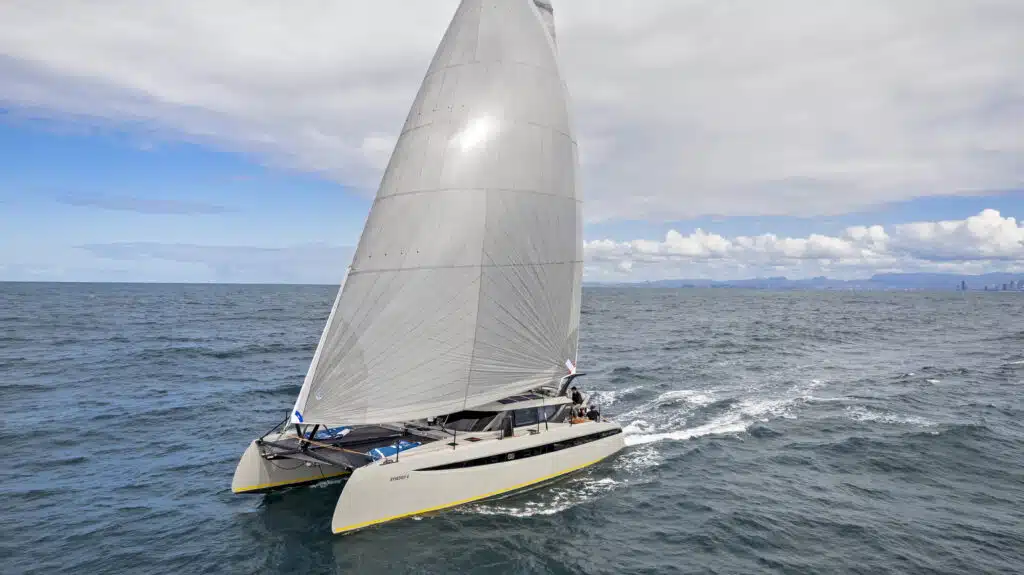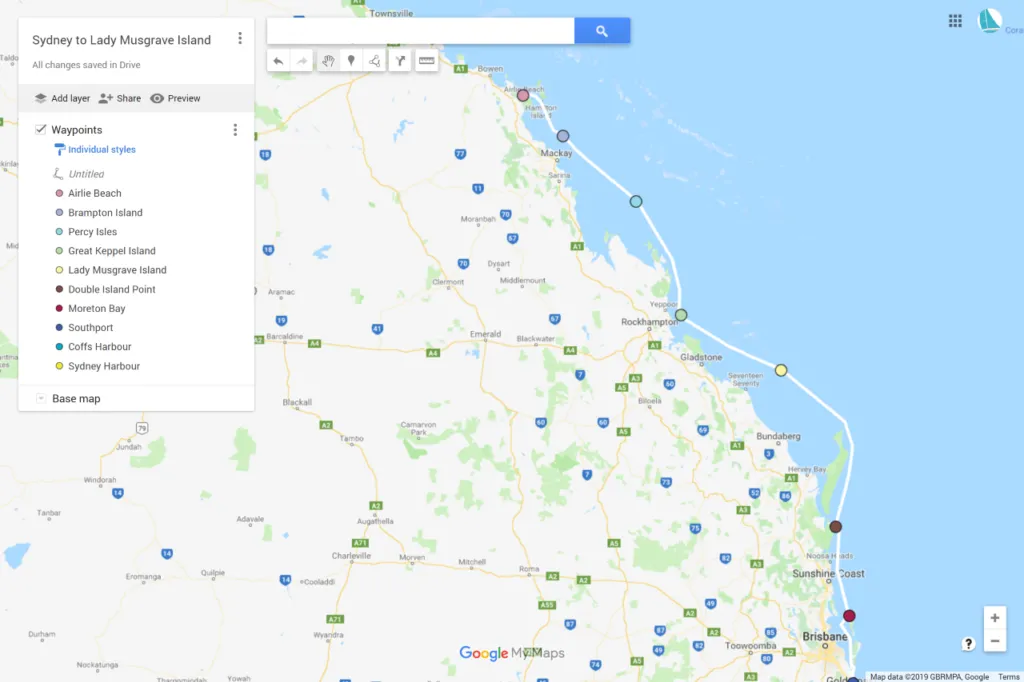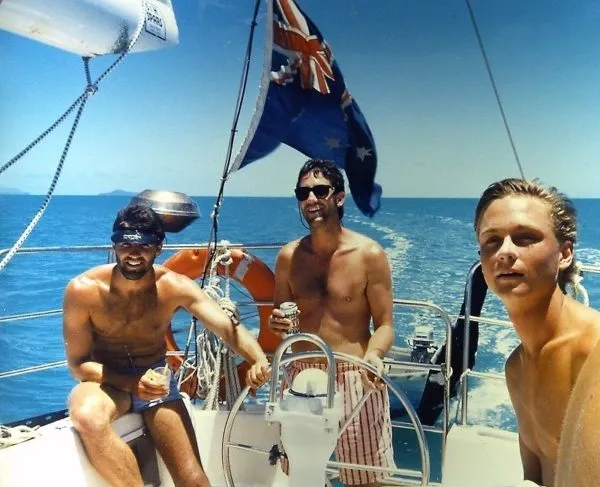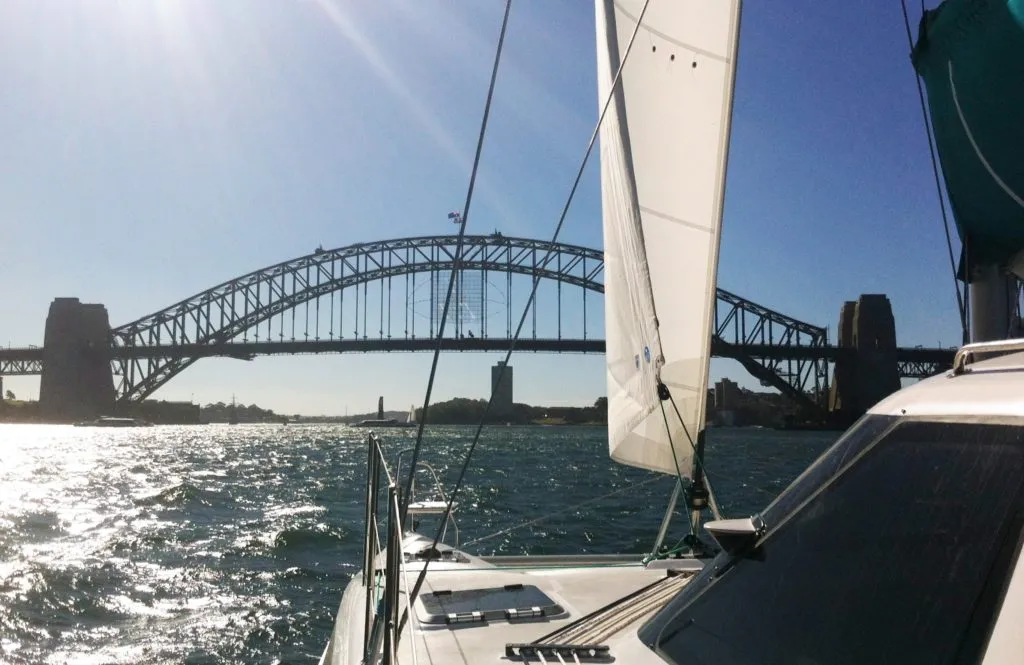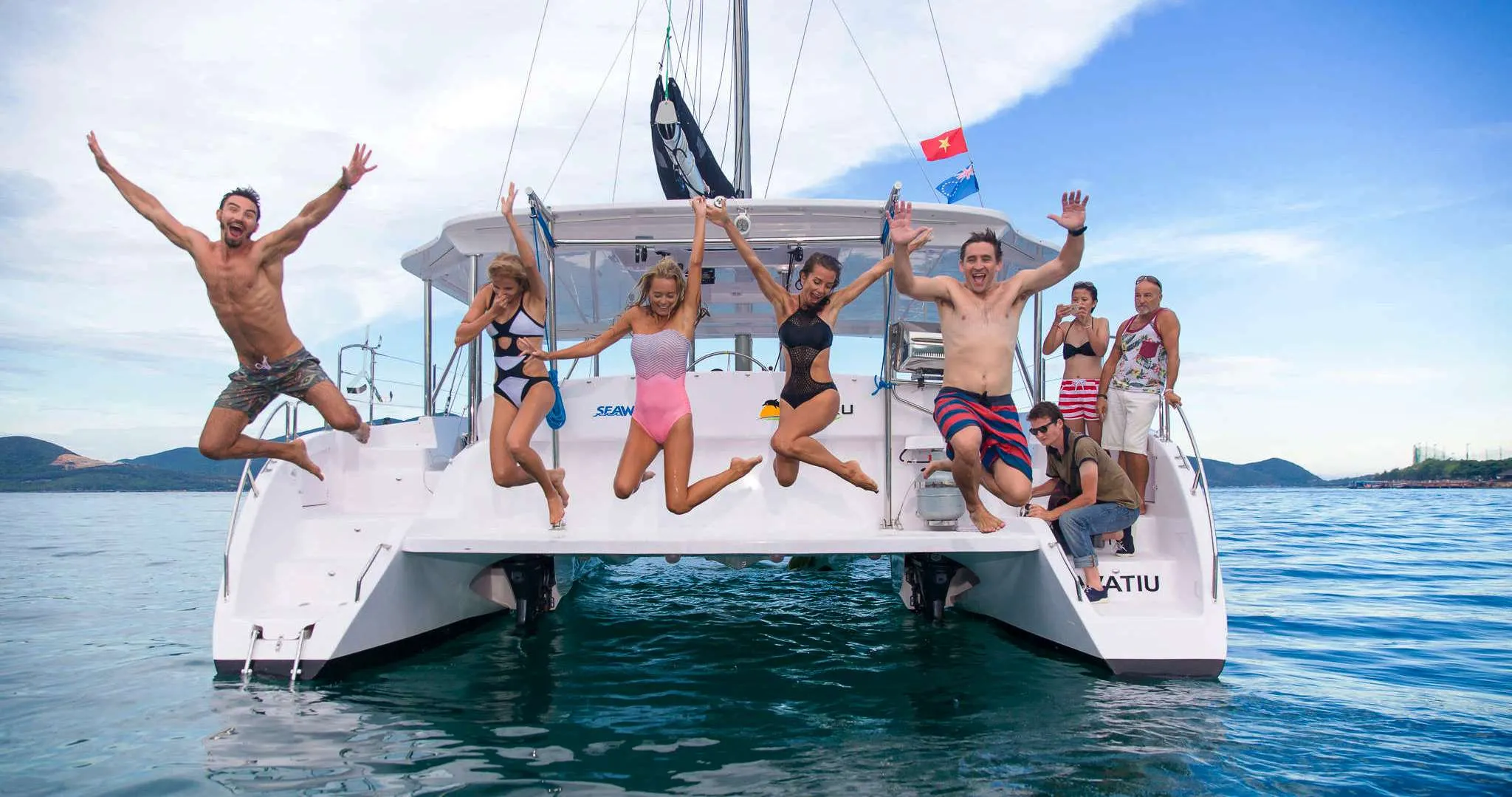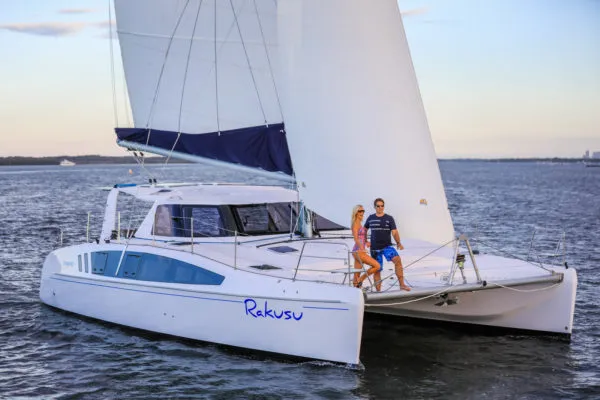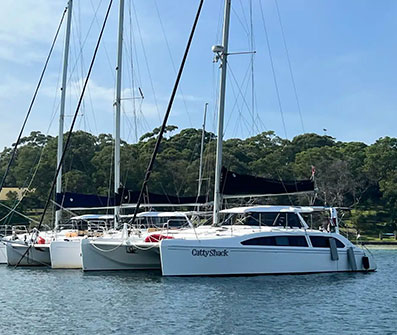Sailing vs 4WDing Fraser Island
May 6, 2025

The Bay to Bay Regatta had been on my bucket list for a few years now and seeing this year it landed on my birthday, I decided it was an opportunity not to be missed. So I phoned up my mate Steve Medwell who I used to sail Tornadoes and F18s with and invited him along for a ride. The ride was our new award winning Corsair 760 trimaran.
Award winning in that it had recently won the Multihull of the Year award in France, plus recently took honours at the Geelong Race Week and Moreton Bay Multihull Regattas.
But this was going to be a different pace. Two days of sailing on the south easterly trades from Tin Can Bay to Hervey Bay using spinnakers virtually the entire way, under the warm Queensland sun and camping overnight on the pristine shores of heritage listed Fraser Island.
But Steve being just as fanatical about 4WDing as he is sailing, we thought it would be a disservice not to stretch the legs of his Amarok that had suffered several modifications to convert it into an off-road beast.
So it was decided, two days sailing the west coast from the southern tip, followed by two days 4WDing the east coast to the northern tip of Fraser Island. The plans were set and the wheels were in motion.
We pick up the boat in Brisbane and drive several hours north on the free way, taking a right turn at Gympie and heading north east from there for about half an hour or so until we arrive at Tin Can Bay (I must say, this is one of the completely unrated values of a trailer sailor – the ability to pack up quickly and move at 100km per hour to get to your destination, rather than sitting on 6 knots at the mercy of the weather). Tin Can Bay is a sleepy little hollow featuring a marina, a caravan park, some house boat rentals and a great little yacht club next to a boat ramp. With 120 boats competing in the Bay to Bay this year, the car park was a hive of activity.
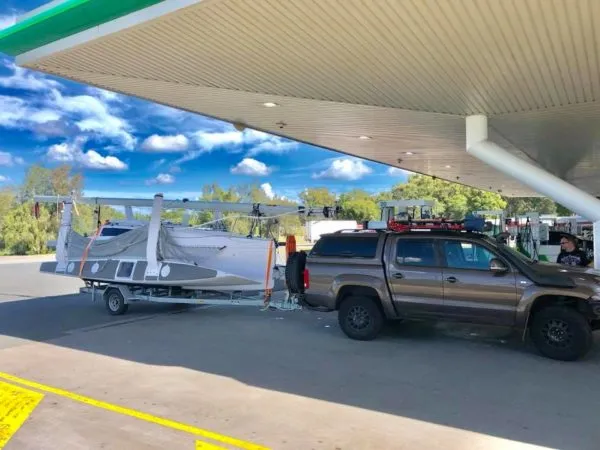
The Corsair 760 is designed to be fast to set up and launch. First you prepare to raise the mast by rolling it back on a dedicated dolly wheel in an A-frame mounted on the transom of the boat. You insert a pin at the base of the mast to lock it ready to raise. Then a small boom is inserted around the gooseneck of the mast pointing up, with some staberlizer stays that snap onto the boat along the same axis of the mast base. Then tie a fixed spinnaker halyard to the trailer retrieval strap attached to the winch. This all takes a few moments to attach and then you simply winch up the mast and attach the forestay.
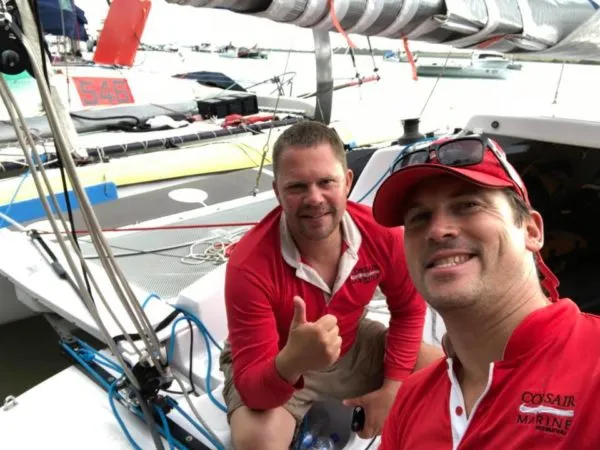
Sailing vs 4WDing Fraser Island
08/06/2018Author: Multihull Central | Event, General news
Bay-to-Bay-header
The Bay to Bay Regatta had been on my bucket list for a few years now and seeing this year it landed on my birthday, I decided it was an opportunity not to be missed. So I phoned up my mate Steve Medwell who I used to sail Tornadoes and F18s with and invited him along for a ride. The ride was our new award winning Corsair 760 trimaran.
Award winning in that it had recently won the Multihull of the Year award in France, plus recently took honours at the Geelong Race Week and Moreton Bay Multihull Regattas.
But this was going to be a different pace. Two days of sailing on the south easterly trades from Tin Can Bay to Hervey Bay using spinnakers virtually the entire way, under the warm Queensland sun and camping overnight on the pristine shores of heritage listed Fraser Island.
But Steve being just as fanatical about 4WDing as he is sailing, we thought it would be a disservice not to stretch the legs of his Amarok that had suffered several modifications to convert it into an off-road beast.
So it was decided, two days sailing the west coast from the southern tip, followed by two days 4WDing the east coast to the northern tip of Fraser Island. The plans were set and the wheels were in motion.
We pick up the boat in Brisbane and drive several hours north on the free way, taking a right turn at Gympie and heading north east from there for about half an hour or so until we arrive at Tin Can Bay (I must say, this is one of the completely unrated values of a trailer sailor – the ability to pack up quickly and move at 100km per hour to get to your destination, rather than sitting on 6 knots at the mercy of the weather). Tin Can Bay is a sleepy little hollow featuring a marina, a caravan park, some house boat rentals and a great little yacht club next to a boat ramp. With 120 boats competing in the Bay to Bay this year, the car park was a hive of activity.
The Corsair 760 is designed to be fast to set up and launch. First you prepare to raise the mast by rolling it back on a dedicated dolly wheel in an A-frame mounted on the transom of the boat. You insert a pin at the base of the mast to lock it ready to raise. Then a small boom is inserted around the gooseneck of the mast pointing up, with some staberlizer stays that snap onto the boat along the same axis of the mast base. Then tie a fixed spinnaker halyard to the trailer retrieval strap attached to the winch. This all takes a few moments to attach and then you simply winch up the mast and attach the forestay.
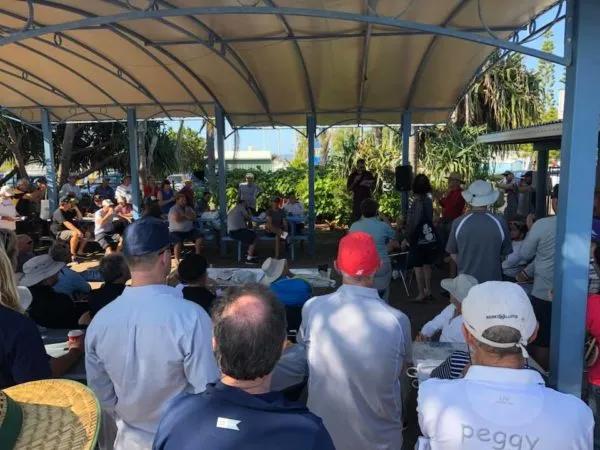
The Corsair design allows the shrouds to stay tight while the floats are folded in on the trailer, so when launching you simply reverse the boat off the trailer and motor away, unfolding the floats when ready. With a nudge the floats fold out and four bolts later, they are fixed into position and you have a much more substantial and stable platform.Taking full advantage of the shallow draft with the daggerboard raised and the retractable rudder up, we throw the anchor out and reverse in and tie the boat in close to the yacht club.
After a nice meal at the yacht club and a few beers, we walk just a couple of metres and crash onboard for the night. The Corsair 760 features a V-double berth and a secondary second double converted from a table that drops down to fill in the space between the lounge seats.
The morning brings blue skies and light winds. A crowd of several hundred people assemble at the yacht club for the briefing and then they scatter onto the flotilla surrounding the sandy shallow waters of Tin Can Bay.
We watch the four divisions for us make a start in light north easterlies and just as we are lining up for our start, the south easterly fills in and a beautiful 12-15 knot breeze blows for the rest of the day…colourful spinnakers fill the horizon. As we sail from past Inskip point and past the southern most point of Fraser. Sailing this boat in 15 knots is just a dream and with just two people onboard its well arranged. A furling jib, furling main, spinnaker into a bag clipped onto one of the nets and all of the lines fed back to the cockpit.
We jibe our way up through the fleet tring to keep our apparent wind moving the boat fast and deep. We are in good company with a few other bigger trimarans pushing us.As we finish, we drop the 5hp outboard in and putter up into Garry’s Anchorage, a beautiful but popular anchorage about a third of the way up the inside of Fraser’s west coast. We reverse in and raft up next to some other trimarans. Soon other tris are rafting up to us and its not long before the entire beach if filled with trimarans.
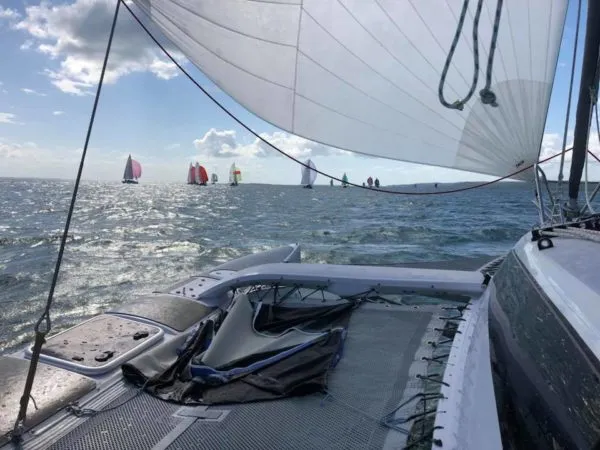
Once settled in, we slide open the storage cooler in theboat filled with beer on ice and catch up with our friendly opponents. As the sun falls, there are raft up parties kicking off all over the bay and some onshore too. We fire up the stove and cook up a storm. The Corsair 760 features an optional stove and sink making it ideal for camper cruising. Seeing that you must take everything with you (and I mean EVERYTHING), the porta potty tucked away downstairs came in handy too.
Later that evening the predicted southerly front kicked in and we heard the wind blowing through the rig with a few showers passing through. The next morning started with squally winds from the south and overcast skies. After some breakfast, we raise anchor and motor down to the start line.
With 20+ knots now blowing, it was an exciting start in a rather tight channel and though we initially debated if we would even use the spinnaker in these conditions, it took seconds once we were raising before the kite went up and we were flying down wind. Dark black clouds stood over use like an angry bouncer about to break up the party, and then the rain dumped. This sucked out the wind with it and we were left with virtually no wind. It was a surreal site seeing a hundred or so boats in front of use, flying spinnakers disappearing one by one into the rain clouds that engulfed them.
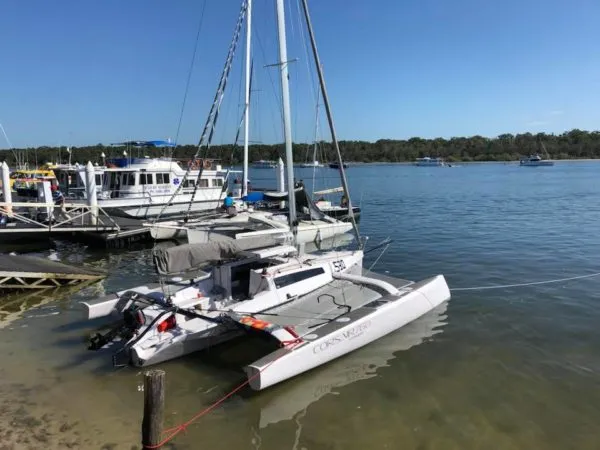
The breeze gradually built again and as we closed into the final legs of the race, we were well above 20 knots of breeze again and we were flying. Surfing down chop, riding the apparent and pushing all of that extra buoyancy that is featured on the new 760’s reverse bow floats that stretch the entire length of the boat. Our top speed was recorded at 21 knots and it felt like it. We were riding by the seat of our pants as we hunted down our competition one by one.
Then Steve spots a man over board in the corner of his eye. With just two of us onboard, the spinnaker bag on the windward side of the boat and the breeze and chop increasing, there was no way we were going to be able to drop sails, start the outboard and punch against the chop to undertake a rescue without losing sight of the MOB, so we quickly adjusted course to the rescue boat nearby and flagged them down. They were attending to a yacht who just snapped their mast (and probably lost a crew I imagine) and as we looked around, there was a bit of carnage. There were Chinese jibes, round ups, snapped masts and blown kites all around us. Yet the trimarans we were racing with, most of which with only two or three crew, trucked on gaining the advantage in the stronger winds from the stability of the floats.
We eventually dropped our kite by retrieving it into the saloon – the perfect spot when it is too dodgy to get out on a trampoline. Then flew through the finish line and back to Urangan Boat Harbour at Hervey Bay to pack up.
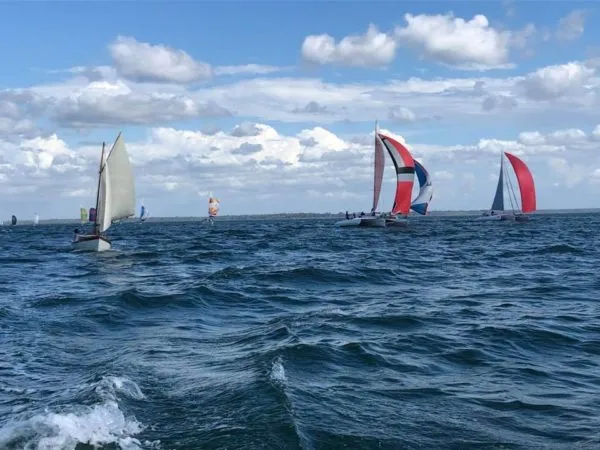
Within a couple of hours the boat was out of the water and packed away on its trailer. In case you are wondering how the trailer made it to Hervey Bay, we dropped down early Saturday morning and took advantage of the regatta’s dedicated bus back to Tin Can Bay. Then we crashed for a night at the local caravan park and enjoyed a hot shower before enjoying the presentation dinner and getting some shut eye before embarking on part two of our tour.
The next morning we caught the first car ferry from Riverheads to the Kingfisher resort area. The barge costs from $175 return for a standard 4WD during off peak, up to $270 for a large 4WD during peak season. You MUST book in advance during busy times as they only operate a couple of times a day and it fills up fast. We purchased a car permit costing about $50 and a night’s camping permit for just over $6 per person per night. These can be purchased online.
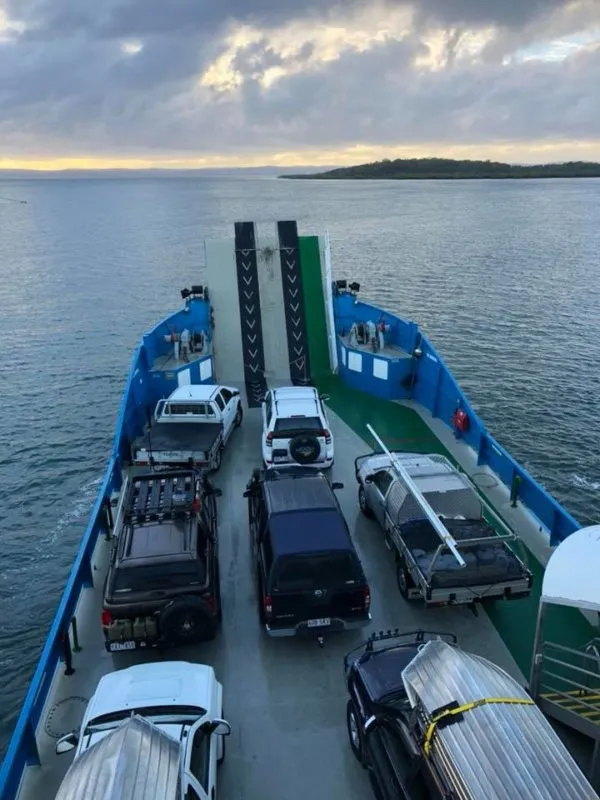
Thanks to the rain, we had nice hard packed sand tracks to drive on as we head directly east across the island, passing through some deep puddles along the way. Within about half an hour we had arrived at the eastern beach and took a left and drove north hitting 80 km/hour with the surf lapping at our wheels.
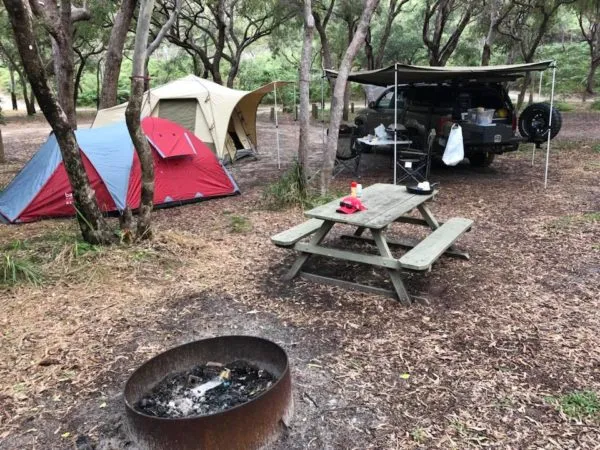
With a quick stop at the beautiful Eli Creek and Champagne Pools, we wanted to establish camp so we could relax for the afternoon. Waddy Point was the safe option as it was well protected in the trees and above the sand dunes to shelter us from the fresh southery easterly blowing. It also had a dingo proof fence which is popular with families.
After the tents we set up we drove west to Wathumba Creek. What a stunning spot. Had we chosen to continue exploring Fraser by sail, this would have been the next anchorage. Shallow crystal clear water, silica white sand, well protected against virtually everything except a south westerly, and place was something out of a postcard.We eventually returned to camp after some sundowners and cooked up some cattlemen cut steaks on the Webber BBQ before heading in for the night.
After torrential rain all night, we were blessed with clear conditions again the next day so we took off early and headed directly to the Great Sandy Cape, the northern most tip of Fraser Island. Not as many make it up this far so you have to be confident you have the rig and favourable tides to go for it. This is especially true for the Ngkala Rocks which test even experienced 4WD drivers as you bounce over steep climbs, flooded dips and sandy tight trails.
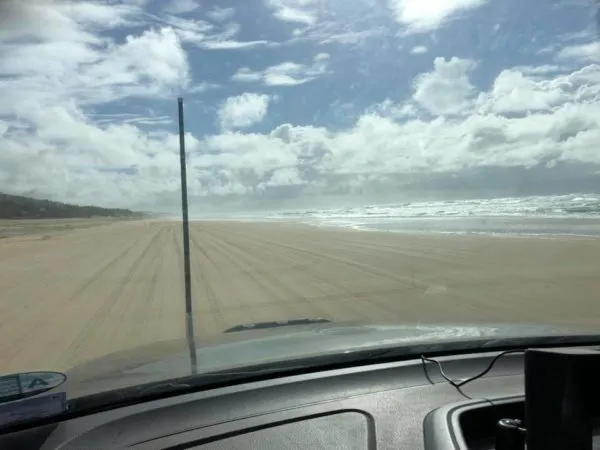
After navigating this patch, we fly up the beach with surf pounding the beach alongside us until we reach the cape, where you turn the corner and the sea is dead flat, apart from some curling surf that wraps around the point. Its beautiful, clean, quite and remote. We celebrate my birthday with a freshly cooked bacon and egg roll from the back of the truck look north to where the Great Barrier Reef soon starts.
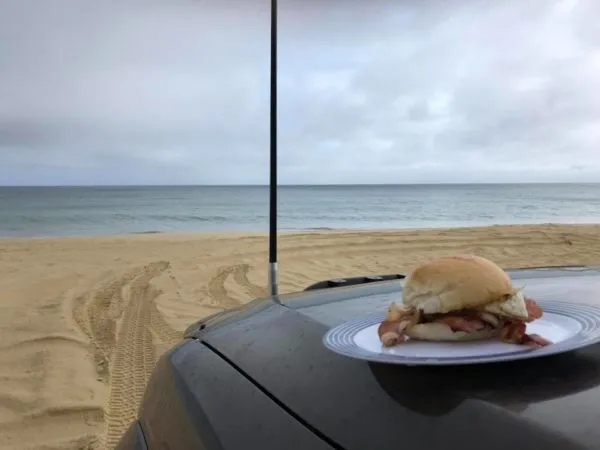
There are at least four ships wrecked off the point and more down the beach, put down to the varying conditions, moving sands and wild surf. Later that day we drive past one of the most spectacular man made sights on the island, the SS Maheno. Originally a luxury cruise liner, this ship was converted into a hospital ship where it later service in Gallipoli amongst other World War 1 clashes, before it was eventually sold to the Japanese after the war. As it was enroute to Japan, it broke its shackles from its tow boat and ended up stranded on the beach. Unable to recover her, this was its final resting place before the Australian Army used her for target practice and let off some test explosives which reduced its stature and cracked its hull. Nowadys is a rusted shell but still has an eerie presence reminding everyone of the harsh conditions that lay out in that surf.
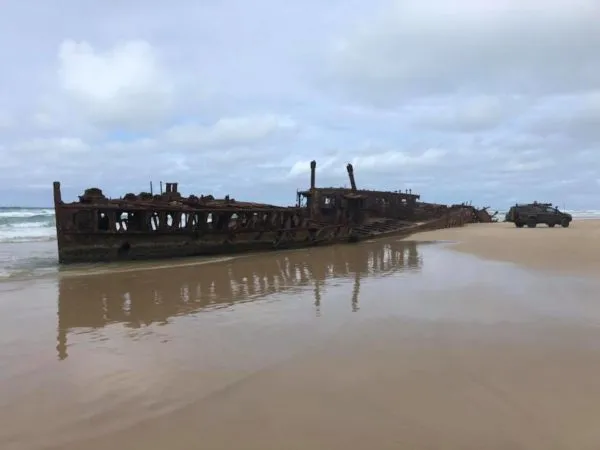
We then dropped past the Pinnacle ancient rocks and eventually back to the Ferry where navigated our way through some of the internal tracks taking us through rainforest like conditions. It was an awesome few days and though it was a bit rushed, we certainly covered some miles and saw much of the island. In reflection there is still so much to see both by sail and by 4WD at Fraser and I feel like we have just scratched the surface. Perhaps we will revisit some day and set up base where we can have both the boat and 4WD at the same camp site to allow the best of both worlds.
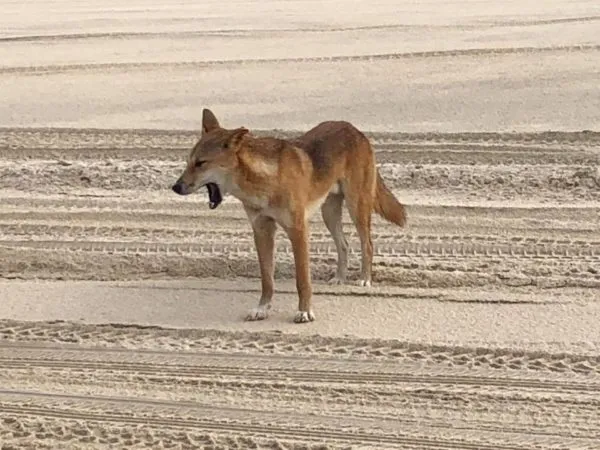
If you haven’t done the Bay to Bay regatta, I would say it is about as much fun you can have on a sailing boat. If you are interested in attending next year on your own boat or perhaps a hire boat, contact me on brent@multihullcentral.com

